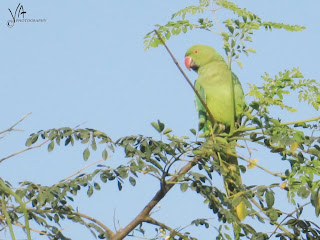VA Photography
The world is full of beautiful things and places. We see them, we feel them, we can touch them and we love them. I want to capture them in a way that they will seem beautiful to everyone. Photography for me is "To create a canvas of my imagination."
Wednesday, 10 February 2016
Saturday, 26 December 2015
Wednesday, 2 December 2015
Lucknow Through My Lens
Bara Imambara (Urdu: بڑا امامباڑا, Hindi: बड़ा इमामबाड़ा) is an imambara complex in Lucknow, India, built by Asaf-ud-Daula, Nawab of Awadh, in 1784. It is also called the Asafi Imambara.
Bara means big, and an imambara is a shrine built by Shia Muslims for the purpose of Azadari. The Bara Imambara is among the grandest buildings of Lucknow.
The complex also includes the large Asfi mosque, the bhulbhulayah (the labyrinth), and bowli, a step well with running water. Two imposing gateways lead to the main hall.
Construction of Bara Imambara was started in 1785, a year of a devastating famine, and one of Asaf-ud-Daula's objectives in embarking on this grandiose project was to provide employment for people in the region for almost a decade while the famine lasted.
Construction of the Imambara was completed in 1791. Estimated cost of building the Imambara ranges between half a million rupees to a million rupees. Even after completion, the Nawab used to spend between four and five hundred thousand rupees on its decoration annually
There is also a blocked (tunnel) passageway which, according to legends, leads through a mile-long underground passage to a location near the Gomti river. Other passages are rumoured to lead to Faizabad (the former seat of power of the Nawabs), Allahabad and even to Delhi. They exist but have been sealed after a period of long disuse as well as fears over the disappearance of people who had reportedly gone missing, while exploring.
The Rumi Darwaza (Hindi: रूमी दरवाज़ा, Urdu: رومی دروازه, and sometimes known as the Turkish Gate), in Lucknow, Uttar Pradesh, India, is an imposing gateway which was built under the patronage of Nawab Asaf-Ud-dowlah in 1784.[1] It is an example of Awadhi architecture.[1] Being an entrance to the city of Lucknow, Russell, the reporter of The New York Times who accompanied the victorious British army that entered Lucknow in 1858, after India's First War of Independence, had called the stretch of road from Rumi Darwaza to Chattar Manzilthe most beautiful and spectacular cityscape that he had ever seen, better than Rome, Paris, London and Constantinople.[citation needed] The Rumi Darwaza, which stands sixty feet tall,[2] was modeled (1784) after the Sublime Porte (Bab-iHümayun) in Istanbul.[3]
Chota Imambara (Urdu: چھوٹا امامباڑا, Hindi: छोटा इमामबाड़ा), also known asHussainabad Imambara (Urdu: حسین آباد امامباڑا, Hindi: हुसैनाबाद इमामबाड़ा) is an imposing monument located in the city of Lucknow, Uttar Pradesh, India. Built as animambara or a congregation hall for Shia Muslims, by Muhammad Ali Shah, the thirdNawab of Awadh in 1838,[1] it was to serve as his own mausoleum and his mother, who is buried beside him.
Monday, 28 September 2015
Subscribe to:
Comments (Atom)








































































